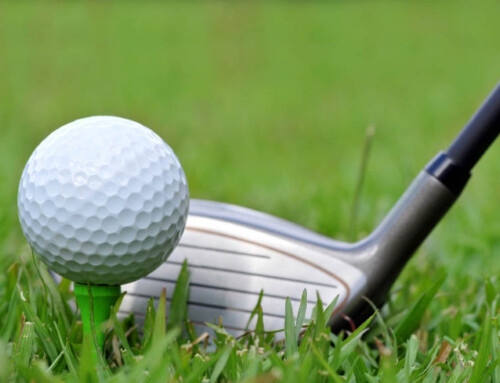By Evelyn Gile, SPT
Golf is a popular sport that many people participate in for leisure activity. It is estimated that 45 million people in the United States participated in golf either on a course, at a driving range, or at a golf simulator in 2023.1 The sport has been shown to provide physical activity at a level that positively impacts individuals cardiovascular, metabolic, and respiratory fitness.2 Although golf is a relatively low impact sport, there is still a risk for injury.
Common Golf Injuries
Musculoskeletal injuries are injuries that occur to the body’s physical structures, such as muscles, tendons, ligaments, joints, spinal discs, or cartilage. In golf, musculoskeletal injuries most commonly occur from repetitive faulty swing mechanics, or an overuse injury.3,4 A golf swing is a complex movement that has a potential risk for injury at each phase.
As a comparison, taking one step in a shoe that rubs against your ankle may not be a problem, but walking 5 miles in that shoe may cause a blister. Similarly, swinging a golf club with slight deviations one time may not hurt, but constantly swinging with improper form leads to repetitive negative stresses on the body which may result in injuries. For example, if a golfer constantly plays with a common swing fault such as swaying, or putting their trail leg into excessive hip adduction during the backswing phase, they may be putting themselves at an increased risk for developing low back pain.4
Common golf related injuries include sprains, strains, tendonitis, bursitis, and spinal disc pathologies.4 The body structures most commonly impacted are the lower back, wrists/hands, and shoulders.4
Preventing Golf Injuries with Physical Therapy
Physical therapists do not only help individuals once they are injured, they also play a large role in injury prevention. A certified physical therapist can assess one’s mobility, flexibility, strength, balance, and swing mechanics to determine if there are imbalances or compensatory movements which may put someone at risk for injury.
A proper screening allows a physical therapist to create a plan that is specific to you. A physical therapist will review strategies for active dynamic warm-ups, create a progressive strength and flexibility program, and review proper body mechanics that will help you prevent injuries.
To schedule an appointment with a physical therapist that specializes in golf injury prevention in Malta, Saratoga Springs, Delmar or Queensbury NY, give Capital Area PT a call at (518) 289-5242.
References
- National Golf Foundation. Golf industry facts. 2024. Accessed June 20, 2024.https://www.ngf.org/golf-industry-research/#golfers
- Murray AD, Daines L, Archibald D, et al. The relationship between golf and health: a scoping review. Br J Sports Med. 2017;51(1):12-19.
- Boehm M. Golf injuries. Mass General Brigham. May 15, 2023. Accessed June 19, 2024. https://www.massgeneralbrigham.org/en/about/newsroom/articles/common-golf-injuries
- Hasley IB, Ostby TD, Fjosne CM, Jelsing EJ. Etiology and prevention of common injuries in golf. Curr Sports Med Rep. 2023;22(6):210-216.
If you are looking to prevent golf injuries, contact us today via our contact form, or call us directly at our physical therapy clinics in Malta, Saratoga, Delmar or Queensbury at 518-289-5242 for a personal evaluation, to assess mobility, flexibility and swing mechanics!






